I first learned how to make smoked pork butt from my mother and it was one of my favorite things to prepare and eat! While I loved my mother’s original recipe, I have made a few tweaks of my own over the years. The finished result is now for you to enjoy!
In this post, I will outline the recipe, show you how to smoke pork properly, and a whole lot more. Let’s begin!
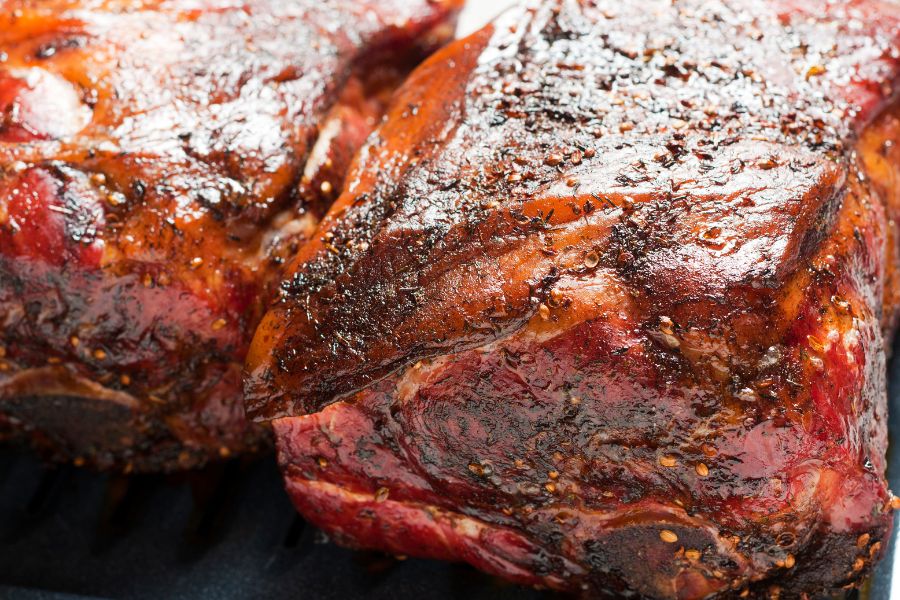
I can’t go any further before explaining the differences between pork butt and pork shoulder! Far too often I find people either mixing these two cuts up or imagining that they are two separate terms for the same cut.
However, pork butt and pork shoulder aren’t the same cuts – there are enough variations that you should think clearly about which one you are buying for smoking.
Now, I do understand where the confusion starts – pork shoulder and pork butt are from the same part of the pig. They both come from the shoulder of the pig, but the pork butt also known as the Boston butt, is higher up on the foreleg.
This cut has far more intramuscular fat and marbling on it. You will often find that it is sold with the fat cap on, while pork shoulder is more likely to have skin on instead.
Pork butts also have a more regular and uniform shape and can be sold either bone in or boneless, while pork shoulder is usually boneless.
Here’s the most important question, though:
Which one is best for or smoking in general?
Well, when it comes to smoking, I prefer pork butt. While you can give a smoked pork shoulder recipe a try instead, the level of marbling, as well as the fat cap on most pork butts make it the far superior choice.
This is why you need to be very careful with what you order at your butcher’s – unless you are planning on making smoked pork shoulder, make certain that you are buying a pork butt.
Related Reading
Another thing that I want to get into before getting to the recipe is the link between smoked pork butt and smoked pulled pork.
Technically, you can make smoked pulled pork and any other kind of pulled pork, really, with either pork butt or pork shoulder. While everyone has their own preference, I would argue that pork butt is the far superior option.
As it has so much marbling on it, it results in the most tender pulled pork! I would suggest giving pulled pork a try with this cut first before anything else.
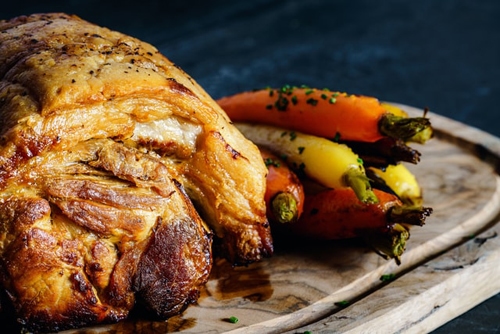
Related Reading
If you are trying to maintain moisture and add flavor to your meat, your usual options are either brining or injecting.
While either option would suffice, I am a bigger fan of injecting pork butt, simply because it is more effective. Of course, you will need to prepare for this step ahead of time as you will need to purchase the appropriate tools.
Another thing that I want to point out is that while a lot of people like to get fancy with their injection solutions, I’m all for keeping it simple. Here is a recipe you can make – it makes one quart – you will require about one ounce per pound:
Mix all the ingredients and make sure they are well combined – the salt and the sugar should be completely dissolved. Pour this solution in a narrow container to make it easier to pull into the syringe.
Pull the liquid into the syringe and place the plunger into the middle of the cut. Release the liquid. Continue this action, leaving a 1.5 inch gap between each injection. Let the pork butt sit for at least an hour or even overnight.
Then, pat dry with paper towels and continue with the smoked recipe.
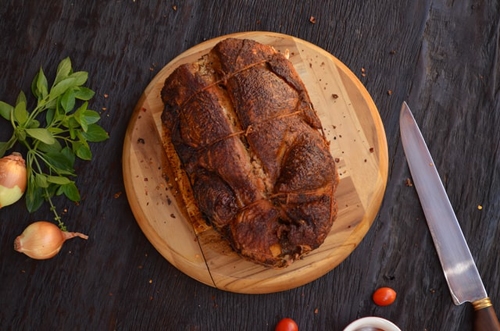
Start by trimming the fat off the pork butt. Trim any excess fat, leaving around 1/4th of an inch of the fat cap around the top of the cut. Make sure to get rid of any additional sinewy muscle or tough tissue.
Preheat the smoker to 225 degrees Fahrenheit or 250 degrees Fahrenheit.
Combine the ingredients of the dry rub in a mixing bowl.
Pat dry the pork butt and apply the yellow mustard over every inch of the pork butt. Next, sprinkle the seasoning so that the entire cut is covered.
Place the pork in the smoker – fat cap facing towards the heat source and close the lid. Cook pork butt until internal temperature reaches 150 to 160 degrees Fahrenheit. This may take up to four hours.
Take the pork out and wrap in aluminum foil or butcher paper. Place back in the smoker and cook until the internal temp reaches between 195 degrees Fahrenheit and 203 degrees Fahrenheit.
Take out, unwrap, and allow to rest for at least one hour. Cut and serve with BBQ sauce.
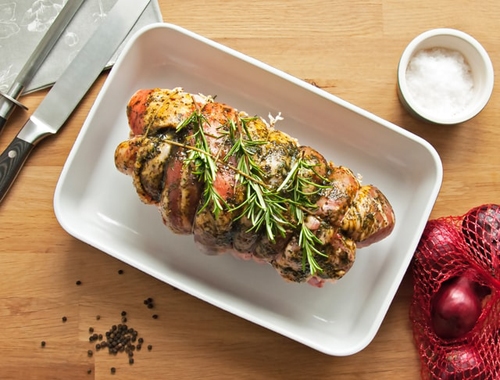
Here are the tips you should follow when choosing and prepping pork butt:
As I mentioned, you should be choosing a pork butt cut over pork shoulder. When it comes to smoking pork butt, I always prefer fresh meat over the frozen version. Thus, you should go shopping for a cut no more than a day before you will be smoking the meat.
Look for a nice pink hue and a good amount of marbling and a decent level of fat on the top.
As for the bone in pork butt or boneless, this is a rather personal question – after all, bone in pork butt can take add to the cook time. However, the bone is also great for lending moisture as well as taste.
I have realized that most people figure than when it comes to fat more is always better. While you do require a certain amount for moisture and flavor, there is such a thing as too much!
See, with excess, only a small portion of the fatty layer will render out. This means that you can often be left with a gelatinous mass that can interfere with your bark.
Due to this, you should always trim down this layer, ensuring that there is only about 1/4th of an inch left.
Slathering mustard on pork butt is often a point of contention for many, but you should certainly proceed with this step. For one thing, mustard and pork are a really great combination.
For another thing, the heat produced during the smoking process burns away most of the flavor. The main purpose of this ingredient is to act like a type of glue, adhering the rub to the surface of the pork butt and allowing a lovely bark to form.
Related Reading
If you really can’t bear to use it, go for olive oil instead. Make sure not to use too much, though. Just a thick enough layer for the rub to stick to.
As you can imagine, the longer that you can leave the spices on for, the better. This helps the flavors to permeate the meat a little. This is why you are often recommended to leave it on overnight if possible or at least a few hours.
However, if you have also injected your pork and waited a few hours here, you may not have the time or patience to allow the rub to take a hold of. In this case, I would suggest letting the ingredients stay on for at least an hour.
Let it sit in the refrigerator so that the top of the pork can dry out a bit, creating and even crispier bark.
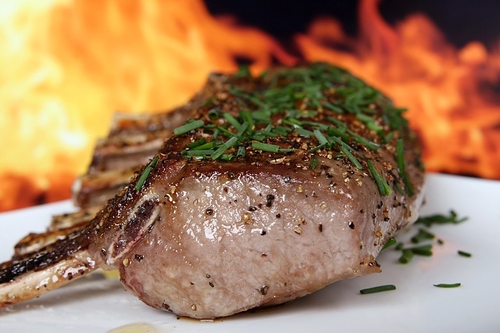
Here are some tips for getting your smoker going:
One of the reasons that I love preparing smoked pork is that this meat works so well with all kinds of flavors. Thus, when choosing wood pellets you have plenty of options.
Now, traditionally, apple wood and smoked pork has been paired together although I find that maple and cherry work just as well.
As this meat can hold up to stronger flavors, you can even venture towards mesquite or hickory. Of course, make sure to only use a handful of wood chips and to top the rest up with oak wood. Use too much of the stronger woods and you risk infusing the meat with a bitter taste.
Next on your agenda is choosing which temperature to smoke your pork at. Now, as this cut is a little heftier, I have found that there isn’t too much difference whether you choose 225 degrees or 250 degrees.
If this is your first time smoking pork butt, then I would suggest going with 225 – not only does this cut benefit from low and slow cooking, you are also less likely to dry out your meat at this temperature.
Now, at 250 degrees, you may be able to speed up the smoking process. I would suggest monitoring the temperature a bit more closely, though, to avoid overcooking the meat.
Related Reading
You can’t talk about smoked pork without talking about the stall. When meat hits about 150 to 165 degrees, it starts a process called evaporative cooling.
This is when the meat begins sweating and producing moisture. This moisture then coats the smoked pork, causing it to cool down and for the stall to set in. It can be tricky to figure out just when this is going to happen.
Most people theorize that this happens at during two-thirds of the cooking process. Therefore, if you expect that your Boston butt will smoke for around 12 hours, the stall may set in at the eight hour mark. Of course, this isn’t an exact science so you do need to keep checking the temperature of the pork.
The best way to overcome the stall is to wrap the meat, a method that is also known as the Texas Crutch. Although you can use aluminum foil or butcher paper, I personally prefer the paper. It is more porous, which allows more moisture to escape. Your meat may take longer to smoke as a result but at least you get a pretty crispy bark at the end.
Related Reading
Although wrapping the meat does help to speed up the process, not everyone is a fan of this method. Many people prefer to smoke pork butt for as long as it takes, even if the smoke time ends up being over 12 hours.
This is because wrapping has a tendency to compromise the bark. Rather than a super crunchy exterior, you are left with one that is slightly soft, even if you wrap the pork in paper.
If you aren’t certain which method is for you, I suggest wrapping a small cut and smoking it. Check out the texture and determine if it works for you or not.
If you do decide to use the Texas Crutch method, you will two sheets of foil or paper that is four times as long as your Boston butt is wide. Here is what you should do:
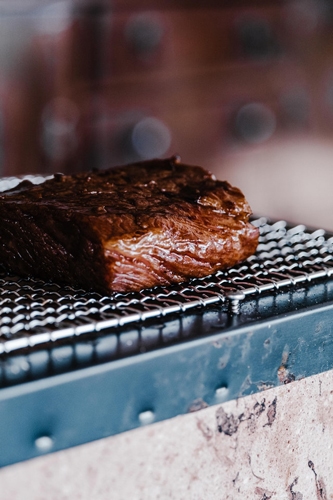
Here are some guidelines you should follow during the smoking process:
One of the other things that I find people recommending to novice smokers is spritzing, particularly with apple cider vinegar or apple juice. The theory is that this helps to keep the meat moist.
Personally, I am not a fan of this method and would suggest that you disregard it as well.
For one thing, spritzing liquid in such high temperatures and with such a large portion of pork isn’t going to help at all. It is going to almost certainly evaporate quickly.
The other issue is that whenever you spray water or liquid, you are increasing the risk of washing off the spices on the pork. In turn, this can mess with the bark.
Last, but certainly not least, it is an unnecessary effort for absolutely no positive results.
As I am sure you are aware, you can’t rely on time alone when smoking meat. Instead, it is all about the internal temp. As such, you will need to use a meat thermometer or an instant read thermometer to tell you when your cut is done.
Now, most people will tell you that you should take out your pork butt when the internal temperature of the meat reaches between 195 and 203 degrees Fahrenheit. I know this is a pretty broad interval and you may not be sure what temperature you should take the pork out.
I have found that taking the pork out at 195 degrees produces the best results. This is because the pork continues to cook even after it is taken out and can get as much as 10 degrees hotter. Thus, taking out a little earlier ensures that it doesn’t dry out on you.
As you know you have to let pork rest once it is remove it from the smoker. This is because at higher temperatures, muscle fibers tend to contract, pushing liquid out. When the pork is allowed to rest, it can reabsorb this liquid.
At the very least, you should try to rest it for around 2 hours – the more the better. If you have guests coming, though, then wait at least an hour. This can sound tedious but trust me, it will be worth the wait.
I know that smoking for a party or group can be rather tricky. This is because it is difficult to know precisely when your pork will be done, particularly including resting time. And, the last thing that you want to do is to keep those hungry hordes waiting.
Well, the holding method may be the key to your solution. Holding involves creating a faux cambro – a system that keeps the pork at the right temperature until you are ready to eat.
To create one of these, you need a large cooler. Pour a few gallons of hot water in your cooler and leave it for about half and hour. Next, dump out the water, roll up some towels and place the wrapped pork in the cooler. Surround this bundle by rolled towels and close the lid until you are ready to eat.
Just remember that once you take the pork out of the cooler, you will need to let it rest for a little while before cutting and serving.
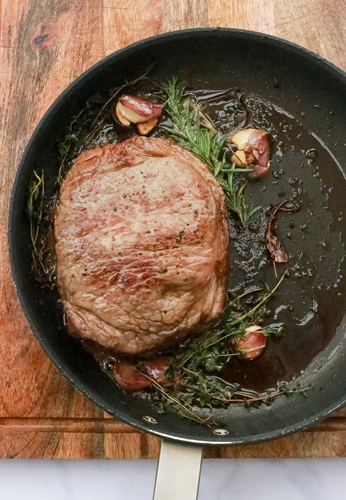
I don’t know about you but one of my favorite things to make with smoked pork butt is smoked pulled pork, especially when it is served with BBQ sauce. This dish is also really versatile and can be turned into pulled pork tacos, pulled pork sandwiches, and lots more. This is great news is if you have leftovers.
It is pretty easy to make pulled pork. Once the pork has had time to rest, you can use forks or bear claws or even a handheld mixer to tear the pork apart.
Remember to only do this to the portion of pork that you are planning on using now. It is best to store smoked pork whole as it maintains a better flavor and texture this way.
Of all the smoked pork butt recipes and the smoked pulled pork recipes, this one is my favorite. So, I urge you to give it a try. Follow the ingredients, steps, and tips as mentioned and you should have something that you are truly proud of!
Related Reading
The size of the cut as well as the temperature of the pork will determine how long you need to smoke it for. In some cases, it can take upwards of 12 hours.
It can take up to 12 hours or more to smoke pork at this temperature, depending on the the size of the cut.